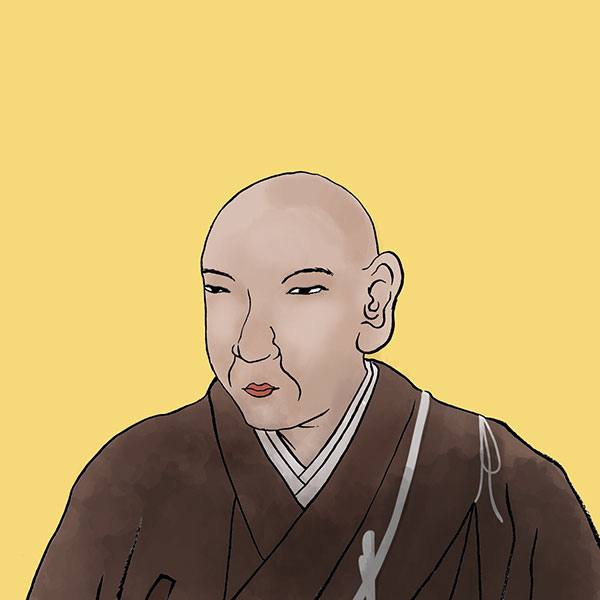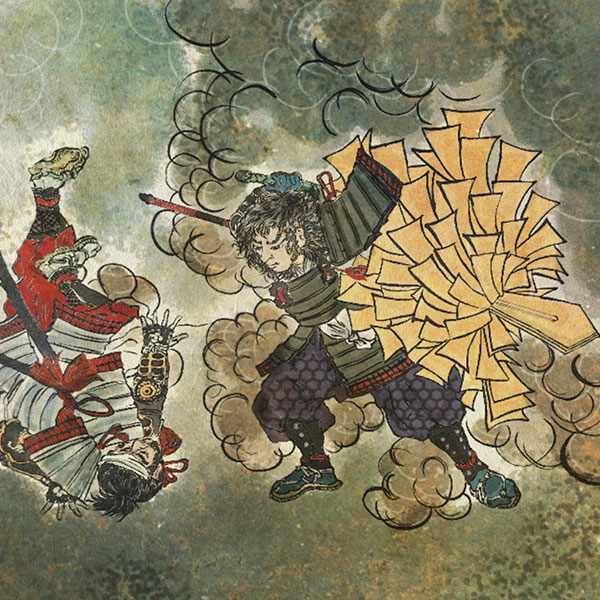Kenyo (1/2)Religious people who opposed Oda

manifestation
- Article category
- biography
- name
- Kenyo (1543-1592)
- place of birth
- Osaka Prefecture
- Related castles, temples and shrines

Osaka Castle
- related incident
Buddhism was introduced in the Asuka period, and especially from the Heian period to the Kamakura period, the number of sects with teachings that were easily accepted by people increased. One of them is Jodo Shinshu. This Jodo Shinshu Honganji Temple has continued to develop through ups and downs. It reached its peak during the Sengoku period, when Kenyo served as the chief priest. However, he also came into conflict with Nobunaga Oda, who was also making great strides. This time, I would like to take a look at the Kenyo at Ishiyama Honganji Temple.
First of all, what is Honganji Temple?
Ishiyama Honganji Temple, where Kennyo served as chief priest. Ishiyama Hongan-ji Temple is a Jodo Shinshu temple located in what is now Osaka Castle and Osaka Castle Park.
To begin with, Jodo Shinshu is one of the Buddhist sects that was created during the Kamakura period (Kamakura Buddhism), and was founded by Shinran. Shinran became a disciple of Honen, the founder of the Jodo sect, and learned his teachings.
Now, around the time of Shinran's great-grandson, Kakunyo the Third. Kakunyo built a temple on Shinran's grave (Otanibyodo) in Kyoto, which was the actual beginning of Hongan-ji Temple. was).
Honganji Temple was built in Kyoto. In the Muromachi period, Honganji was supposed to be the central temple of the Jodo Shinshu sect. However, it has a troubled history, including pressure from other Buddhist sects and conflicts with other sects within the same Jodo Shinshu sect. Hongan-ji Temple, which was undergoing difficult management, became a temple connected to the Tendai sect Shoren-in Temple.
Honganji Temple from the birth of Rennyo and Kennyo
Honganji Temple belonged to other sects of temples.
In 1415, a monk was born at Hongan-ji Temple, Rennyo, the 8th, the founder of Hongan-ji Chukyo. However, by the time Rennyo became chief priest of Hongan-ji Temple, the temple was in complete decline.
Therefore, Rennyo left Kyoto and began active missionary activities. As a result of his efforts, he gained followers all over the country, especially in Kaga Province (present-day Ishikawa Prefecture), which came to be de facto occupied by Hongan-ji Temple due to the turmoil of the feudal lords. In 1478, after gaining many followers, Rennyo established Hongan-ji Temple in Yamashina, west of Kyoto, called Yamashina Hongan-ji Temple. Furthermore, in 1497, Rennyo retired and built a temple in Osaka, Ishiyama Hongan-ji Temple (Osaka Hongan-ji Temple).
By the time Rennyo became the chief priest, he had gained followers from all over the country, centering on Yamashina Hongan-ji Temple, and was making great strides.
However, in 1532, when Rennyo died and Kennyo's father, the 10th Shonyo, became chief priest, Honganji was involved in a turmoil caused by Harumoto Hosokawa, the lord of the Muromachi shogunate, and Yamashina Honganji was lost. Shonyo moves his base to Ishiyama Honganji Temple (Ten Hoka no Rebellion). From this point on, Hongan-ji Temple came to be based at Ishiyama Hongan-ji Temple in Osaka, Settsu Province.
And enlightenment is born.
Birth of Kenyo
Kennyo was born in 1543 as the son of Shonyo, the 10th head of Honganji Temple.He is also called Honganji Kosa because his maiden name (the name given to monks when receiving precepts) is Kosa.
In 1554, when Kenyo was 10 years old, his father, Shonyo, became seriously ill, and the tokudo (ritual to become a monk) was hurriedly performed. At this time, following the precedent of Shonyo being an adopted child of the Kujo family (a system in which, unlike adopted children, he was given guardianship without the right of inheritance), he became the adopted son of the former Kanpaku, Tanemichi Kujo, and studied under Shonyo as his teacher. The day after he received his tokudo, his father, Shonyo, passed away, and he took over as chief priest of Hongan-ji Temple with the assistance of his grandmother, Chin'ei (the 9th Jitunyo's wife and Shonyo's mother). Ishiyama Honganji Temple is managed by the young Kennyo as its chief priest.
Now, Kennyo has become the chief priest of Honganji Temple. In 1557, he welcomed Kimiyori Sanjo's third daughter Nyoharuni into his room. Nyoshunni was adopted by Sadayori Rokkaku and married to Kenyo. Also, his older sister was Takeda Shingen's successor, Sanjo, and Kennyo and Shingen became brothers-in-law.
This would form the basis for building an anti-Oda force later on when he would come into conflict with Oda Nobunaga.
Honganji Temple’s Monzeki establishment and peak period
Now, Ishiyama Honganji Temple has been active in missionary activities since Rennyo and was able to gain followers all over the country. Honganji Temple became wealthy and began to use its financial power to donate to the imperial court and other organizations. In particular, he is said to have made a large donation to Emperor Ogimachi on his accession to the throne. Therefore, in 1559, Emperor Ogimachi made Kennyo a monzeki. Monzeki was the highest-ranking temple priest from the Heian period to the Edo period (a monk who became a monzeki was called a monzeki, and a temple where a monzeki was the chief priest was called a monzeki temple), and in the Muromachi period, monzeki was a monk of the highest ranking temple. Only the sons of the Gosekke family and members of the imperial family who became monks were able to take up the position. However, Kennyo, who is said to be a direct descendant of Shinran, cannot become a monzeki because he has no connection to the Fujiwara Gosekke family or the imperial family. Since he was adopted by the Kujo family when his fathers, Shonyo and Kennyo, became monks, he became a monzeki as a member of the Gosekke family Kujo family. Later and earlier, Ishiyama Hongan-ji Temple was the only temple other than the Gosek family or the imperial family to become a monzeki (monzeki of Hongan-ji Temple). Hongan-ji Temple, which once belonged to another sect (Tendai sect Shoren-in), became a completely independent sect. Furthermore, in the 4th year of Eiroku (1561), Kennyo was appointed to the priesthood.
He also strengthened his foundation by establishing in-law relationships with the Kanrei Hosokawa family and court nobles. On the other hand, the temples belonging to Hongan-ji were placed in the Kinai area, centering on Osaka, where Ishiyama Hongan-ji Temple is located, and he also took control of the uprising by his followers, which was promoted by his father Shonyo.Ishiyama Hongan-ji Temple has the power of a feudal lord in name and reality. Now it looks like this.
Participation in Nobunaga's siege network
By the way, it was around the same time that Ishiyama Hongan-ji Temple became powerful, in 1568.
Oda Nobunaga, who ruled Owari Province and Mino Province (present-day western Aichi Prefecture and Gifu Prefecture), marched to Kyoto with Yoshiaki Ashikaga at his side. After moving to Kyoto, the Oda family crossed Kyoto and invaded Settsu Province and Kawachi Province (present-day Osaka Prefecture). The Oda family invaded and plundered and demanded donations from various places. He then asked Ishiyama Hongan-ji Temple and Sakai for money, and Ishiyama Hongan-ji Temple is said to have paid 5,000 kan. However, the autonomous territory of Sakai refused this money, and as a result, Sakai was placed under the control of the Oda family. In this way, Ishiyama Honganji Temple, which was under pressure from the Oda family, began to feel antipathy toward the Oda family.
Then, in the first year of Genki (1570), the Miyoshi family, which had been blockaded in Shikoku, invaded Settsu Province and entered into a state of war with the Oda family (Battle of Noda Castle and Fukushima Castle). During this battle, late at night on September 12th, Ishiyama Honganji rebelled against the Oda family, marking the beginning of the Ishiyama Battle. Also, the day before the uprising, the Honganji uprising, organized by the Asai family, the Asakura family, and the Kosai clan, headed south west of Lake Biwa toward Kyoto. Oda Nobunaga was surprised by this and withdrew from Settsu Province, and this time he faced off with Asai Asakura in Sakamoto, Omi Province, the uprising at Honganji Temple, and Enryakuji Temple on Mt. Hiei (Shiga no Jin). During this time, Kennyo encouraged uprisings in various places, and the temples of northern Ise rose up (Ise-Nagashima Ikko Ikki). The battle of the first year of Genki (from the Battle of Noda Castle to the Battle of Fukushima Castle to the Shiga Siege, commonly known as the First Siege of Nobunaga) was ceased due to the arrival of winter due to Emperor Ogimachi's order. Immediately after this armistice, Kennyo began exchanging letters with his brother-in-law, Takeda Shingen (although Sanjo passed away in the summer of the first year of Genki).
Battle of Ishiyama
Now, Oda Nobunaga finds himself in a predicament due to the rebellion of Ishiyama Honganji Temple and Asai Asakura. Nobunaga overcomes the crisis by making peace. However, around the same time, the relationship between Yoshiaki Ashikaga and Nobunaga Oda, who were supposed to be supporting him, began to deteriorate. Yoshiaki Ashikaga, who wanted to reduce the influence of the Oda family, independently sent letters to Kennyo, Asai Asakura, and the Takeda family in Kai Province, asking them to support him.
- related incident

- WriterTomoyo Hazuki(Writer)I have loved history and geography since my student days, and have enjoyed visiting historical sites, temples and shrines, and researching ancient documents. He is especially strong in medieval Japanese history and European history in world history, and has read a wide range of things, including primary sources and historical entertainment novels. There are so many favorite military commanders and castles that I can't name them, but I especially like Hisashi Matsunaga and Mitsuhide Akechi, and when it comes to castles, I like Hikone Castle and Fushimi Castle. Once you start talking about the lives of warlords and the history of castles, there's a side of you that can't stop talking about them.




